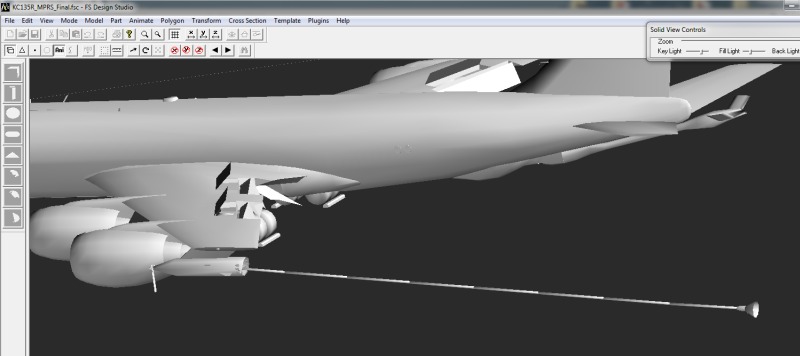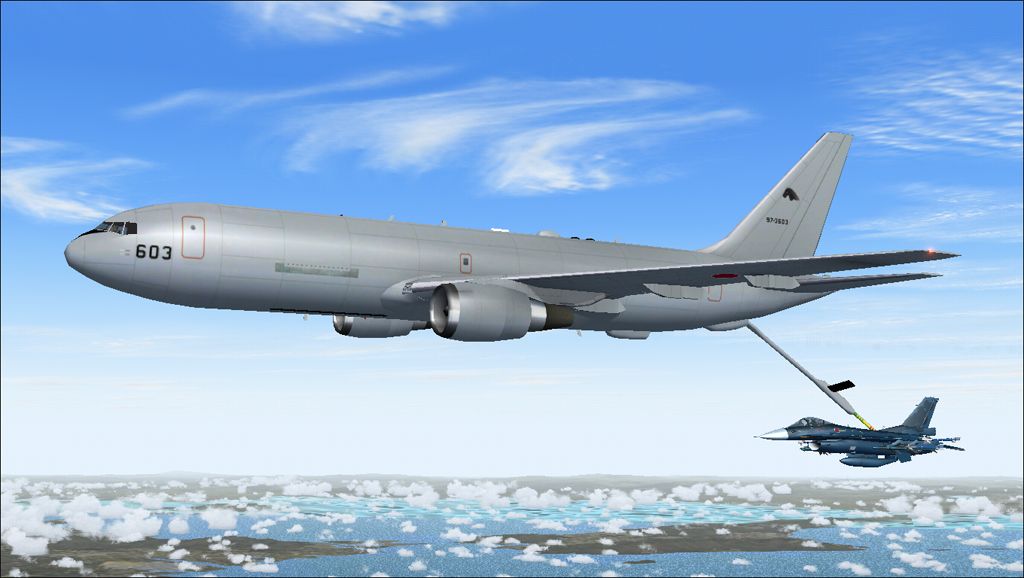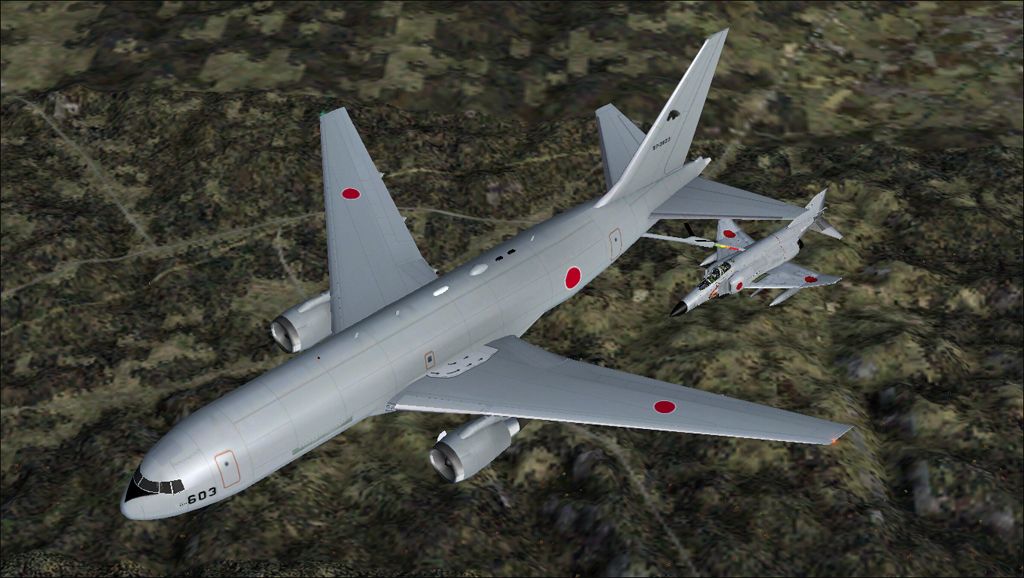JYAI_KC-767_FS9_1.zip
JYAI_KC-767_FSX_1.zip and
JYAI_KC-767_Paint_Kit.zip
Just awaiting confirmation that they are available.

John





Eight cylinder sections, each hinged at the front end, each one is a child part of the one in front of it. There's not much sag in it as that was going to be a major PITA to build and animate in there but I think you could just rotate each head of each cylinder to produce an ever increasing angle. In real life the sag only comes into play when the receiver plugs in and relieves the tension on the hose, otherwise the hose trails fairly taught the whole time.John Young wrote:Mike, how did you coil a considerable length of hose into each pod and still produce a sag in the hoses when deployed? That sounds like a very difficult bone animation with a lot of polygons. I steered clear of that for my RAF Victors and just did a simple appear/disappear according to the altitude trigger.
John


Johns 767 models were cruising almost exactly at 300kts indicated at FL225. The Coral F-15 model is in the lower range of the throttle there and was actually using touches of the speed brake to keep position. It was very easy to keep in position on the JYAI 767 tanker models once I learned what the proper position looked like in reference to the bottom of the tanker.MIKE JG wrote: For the refueling versions, he created an FDE that made the model cruise at a much slower (~250 kias) speed. If he hadn't done so, a user aircraft would have a hard time trying to refuel from the normal model as its cruise speed would be too fast to keep up with.

Thank you for giving me an excuse to post the most awesome "what if..." model ever made:MIKE JG wrote:... the A-10 on the other hand.....






